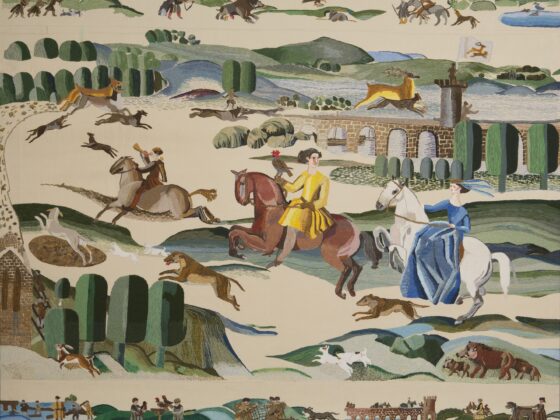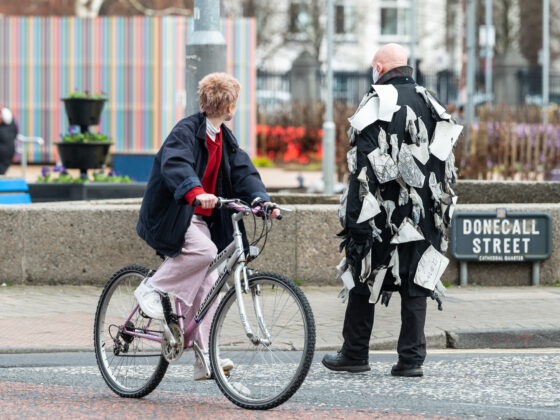THOMAS POOL INTERVIEWS CHAIRPERSON MARY LOU O’KENNEDY ABOUT THE ROS TAPESTRY – A MONUMENTAL PROJECT 27 YEARS IN THE MAKING CHRONICLING THE MEDIEVAL HISTORY OF NEW ROSS AND THE SOUTHEAST OF IRELAND.
Thomas Pool: What can you tell us about your background? What drew you to the Ros Tapestry project?
Mary Lou O’Kennedy: I’m a resident of New Ross, County Wexford, where the tapestries originated. I have a personal background in community development work, and in my career, previously, I would have worked professionally in the area of community development and local development. I had become very involved in community projects in the town, including the development of St Michael’s Theatre. I was asked in 2020 to Chair the board of New Ross Needlecraft Ltd which is the management board of the Ros Tapestry. That’s what drew me to the Ros Tapestry project initially. I think it’s an amazing project, which is reflecting the history and heritage of the area, along with it being just an incredible artistic piece, with the beauty of the cartoons that were painted, on which the tapestry is built, and showcasing the wonderful craft of crewel embroidery.
So it’s an amazing combination of the history, the artistic and the craftsmanship of the area. It just seems to attract people; it draws them in. It has a very inspiring and kind of magical aspect when you see all those things come together; it’s hard to even really explain the experience until you go and see them for yourself. So, I thought it was really worth being part of the project. In my role as Chair, I try to protect the tapestry and ensure the creation of an exhibition in the town for all visitors, whether they’re into art or history, and the general public, to see and enjoy .
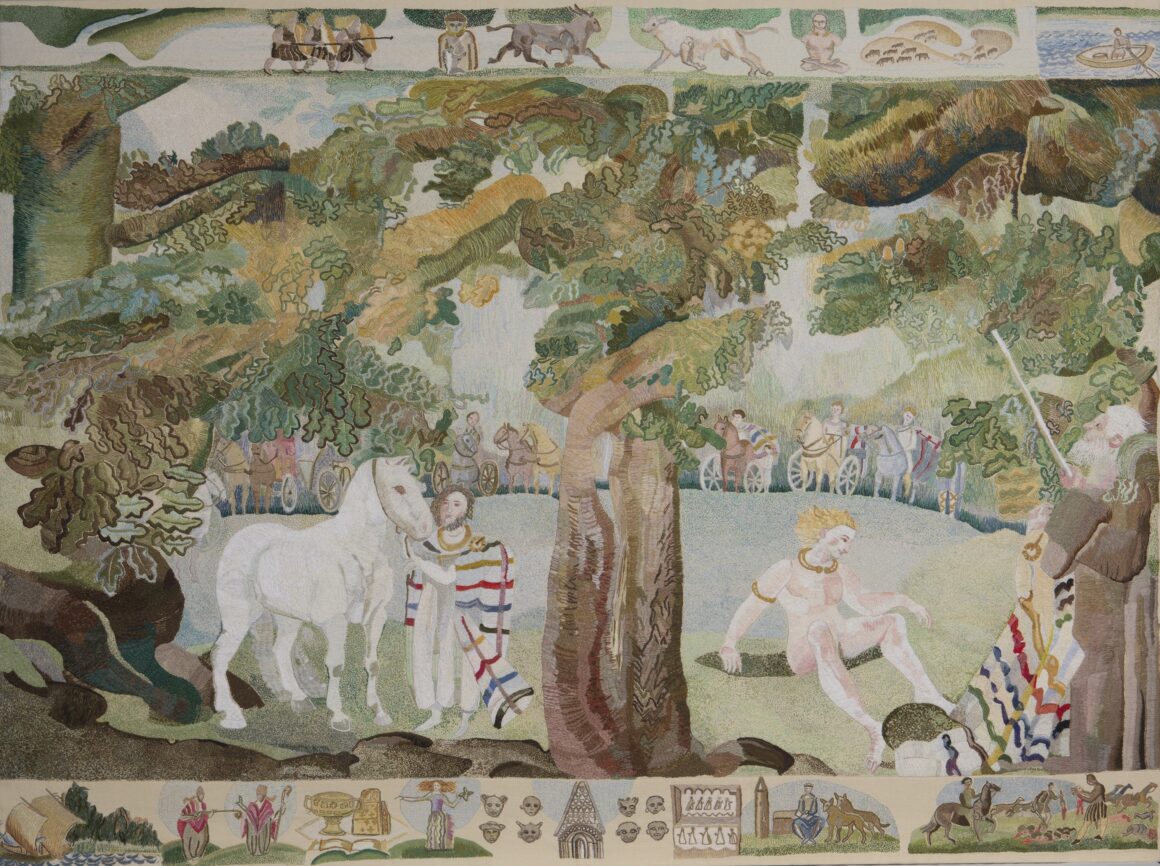
TP: Do you do any of the stitching yourself?
MLOK: No, I don’t actually, but what I did do during the summer was help secure a small grant from Creative Ireland and the local county council to reach out to the community, to encourage more people to learn the craft. And we included members of new communities from the area and people who were starting their lives in the locality. So we had participants from all over, from Nigeria, and Bangladesh, as well as the local community. I did attend those classes and started to learn how to do the embroidery; this gave me an entirely new level of appreciation for the craft because it comes from our heritage. To learn the craft gives you a whole new appreciation of the skill that it takes to create the images in the tapestry.
The stitchers who work on the tapestry refer to it more as ‘needle painting’ than stitching, because it requires the stitcher to pick the correct shade of wool, and to use particular stitches in a particular direction, to reflect the movement in the tapestry. The stitches can be used to create a 3D effect and to give different types of textures to the picture that they’re embroidering.
It’s a real eye opener when you learn how to embroider and see the intricacy of the workmanship that goes into it. I wouldn’t call myself an embroiderer, but I’m learning. As I learn, I just really appreciate the tremendous work of the over 180 stitchers who have given their time as volunteers and have worked on the 15 tapestry panels since around 1998. Their workmanship was learned overtime, and most of them are from the Kilkenny-Wexford-Waterford-Carlow area. They’re mostly amazingly talented women, with a couple of men volunteering over the years, but mostly women, who brought their talents and passion to this project.
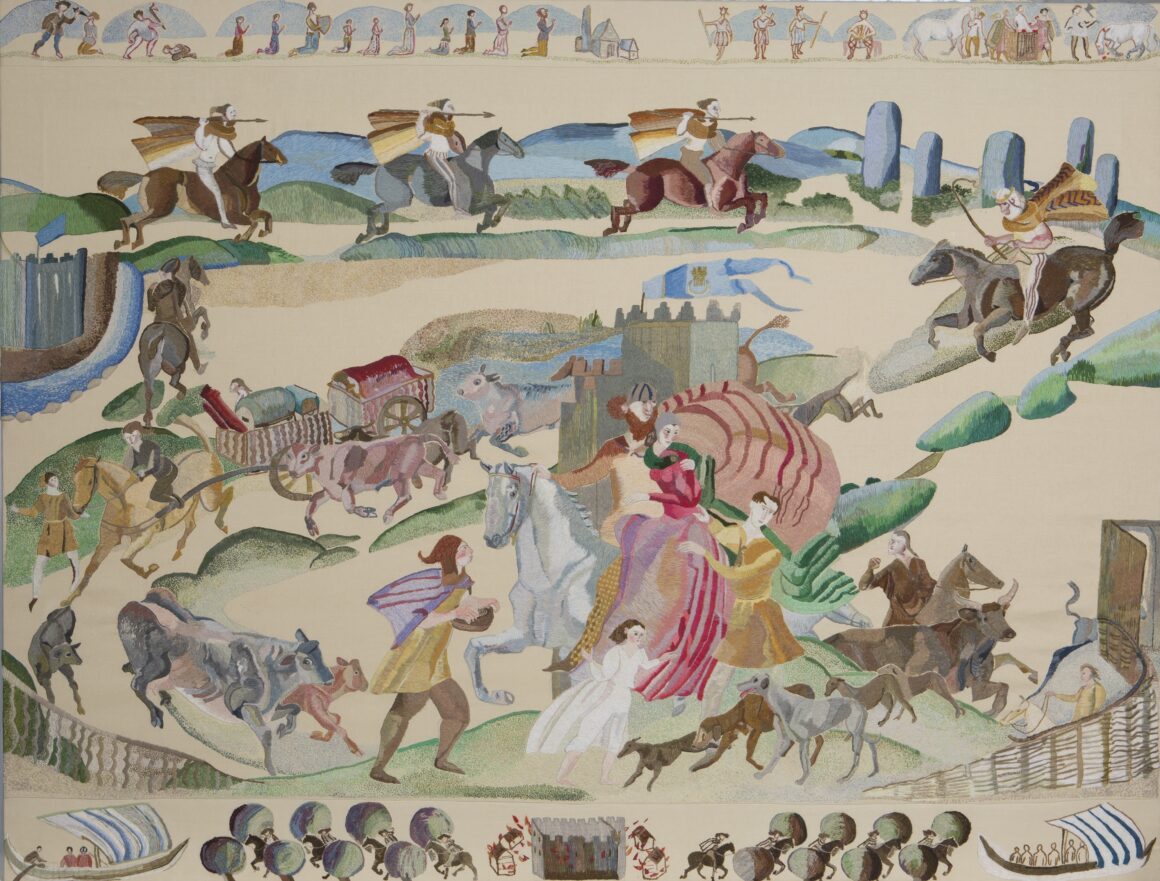
TP: Traditionally, needlework (including embroidery, knitting, and crochet) has not featured heavily in the art historical canon. How do you view the place of needlework in Irish cultural history?
MLOK: In my opinion, needlework has played a part of our cultural heritage throughout history. We recently marked Bridgid’s Day for instance. Bridgid’s embroidery box is part of an exhibition of her belongings in Glastonbury. The tradition in our cultural history goes back to early-Christian Ireland. Crewel embroidery, the method we use for the Ros Tapestry, has origins that are unable to be fully traced back through history; I don’t think there’s a consensus on its origins. Crewel work was used in the medieval Bayeux Tapestry, the direct inspiration for the Ros Tapestry, which reflected the story of the Norman conquest of England.
My view is that much of the work of women, and their role in art practice, is poorly reflected in our cultural history. Any woman from any country in the world can probably talk of needlework. Whether it’s knitting or embroidery or crochet or weaving, the art of needlework is almost universal across all cultures and heritage. However, it’s probably underestimated and underappreciated. One part of our project, to build upon the legacy of the Ros Tapestry and to carry on the tradition of crewel embroidery into the future, is to open a school of needlework. We’re conducting a feasibility study on the basis of trying to build a future generation for this craft.
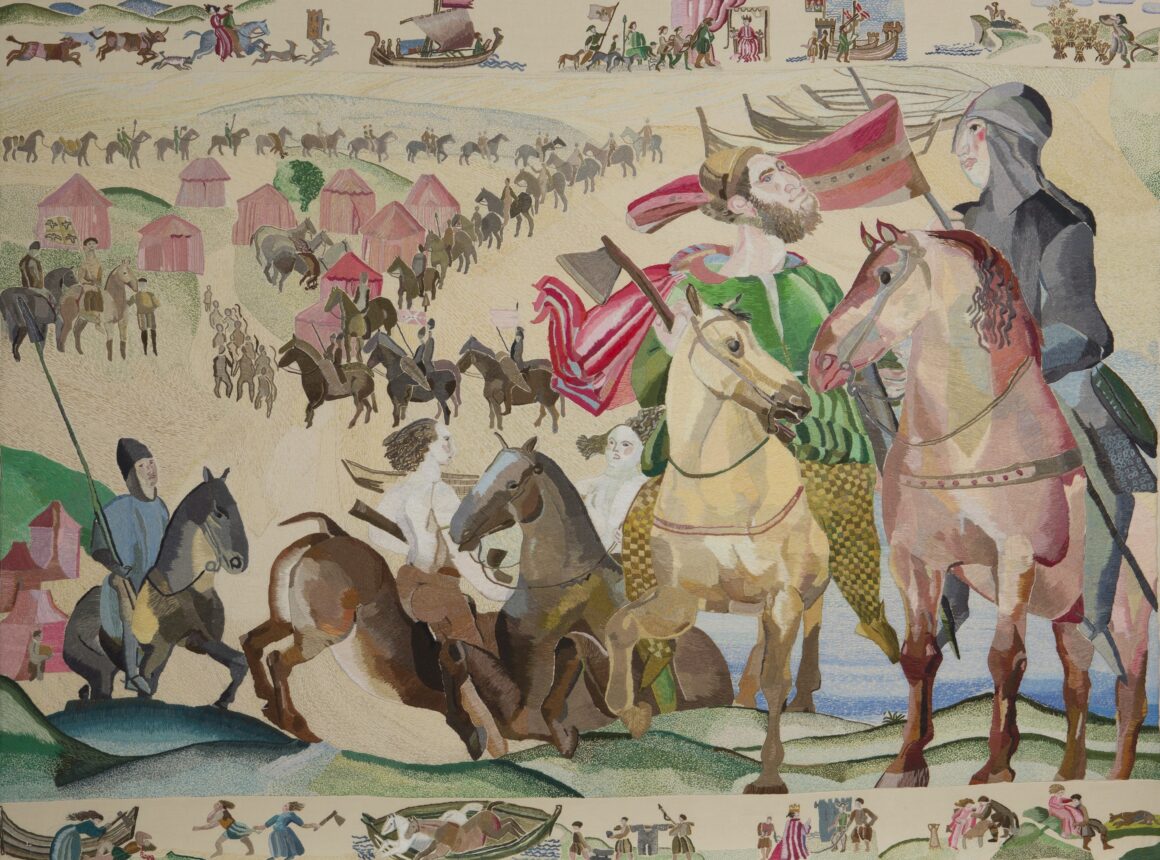
TP: New Ross has recently seen renewed focus as the setting for Claire Keegan’s novel, Small Things Like These (Grove Press, 2021), and the film adaptation of the same name, starring Cillian Murphy. How do you view the Ros Tapestry within local and national history?
MLOK: I think New Ross is a very interesting place. It’s almost like a gateway into much of Ireland’s history. The Ros Tapestry reflects the story of the arrival of the Normans in Ireland, their landing at the Hook peninsula, their coming to Ross, then onto Kilkenny and Dublin. So many events from our medieval past take place in Ross and the surrounding area. The Claire Keegan novel tells a different story about a different era in our history, but the tapestry reflects the importance and significance Ross held during the middle ages.
Another project we are working on concurrently is the Threads of Friendship tapestry, to tell the story of our more recent past, and New Ross’s connection with President John F. Kennedy. It’s like a microcosm of Ireland, all the things that have happened in this area and the connections around the world it has formed and the stories it tells. I think that story is quite extraordinary.
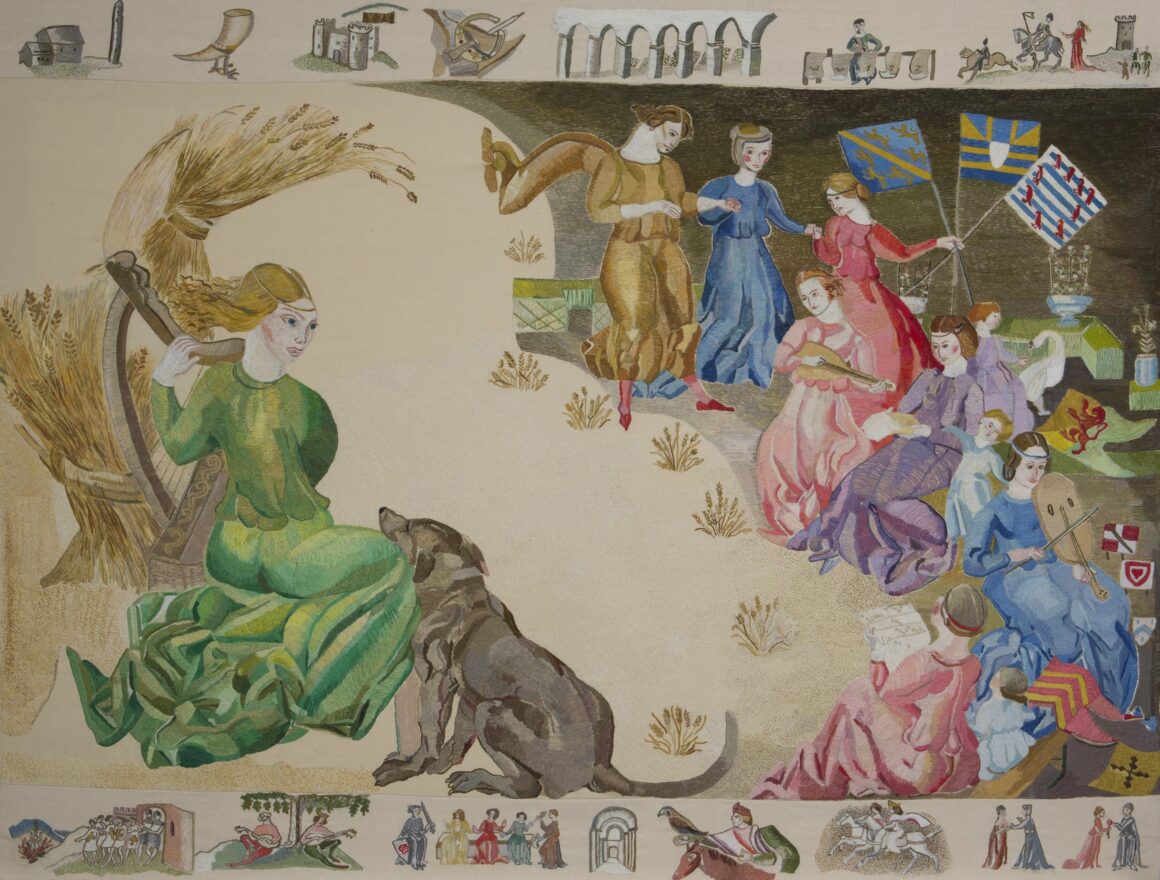
TP: As Chairperson, could you walk us through the history of the project and how it came to be?
MLOK: The project was the vision of Reverend Paul Mooney. He was the new rector of Saint Mary’s Church in New Ross, which was originally built by William Marshall and his wife Isabel, New Ross’s original Norman lords. He wanted to tell the story of that history. He had seen the Bayeux Tapestry and wanted to replicate it in New Ross. He met with some local artists, and he eventually settled on Ann Bernstorff, who designed the original cartoons for the stitchers to work from. She painted the original 15 panels detailing the local history, starting with the Celts, right through the Norman conquest of Ireland.
Paul worked with Ann and her daughter, Alexis, who was the main instructor of the original embroiderers along with Mairin Dunne. They put out appeals to various women’s groups to get involved. The first panel they finished was the one about the Hook Lighthouse. And that has continued over the past 27 years. The final panel is just about complete, with a few details being finalised. That final piece will be launched this year. We have a book about the history of the project and the women who helped create it called A Tale Told in Thread, which is really about the community spirit, the comradery, the social aspect, and the sense of wellbeing that people got through this work.
The project has been funded over the years by different patrons, and a lot of people who contributed financially as well. Each panel has been sponsored by a patron, and we also received funding and support from Wexford County Council, but mostly we’ve been supported by private sponsors.
It became quickly apparent to Rev Mooney that the project had become something much larger than his church could accommodate, and even greater than its original intention. Someone from the Heritage Council even remarked it could be considered one of Ireland’s greatest cultural legacies of the 21st century.
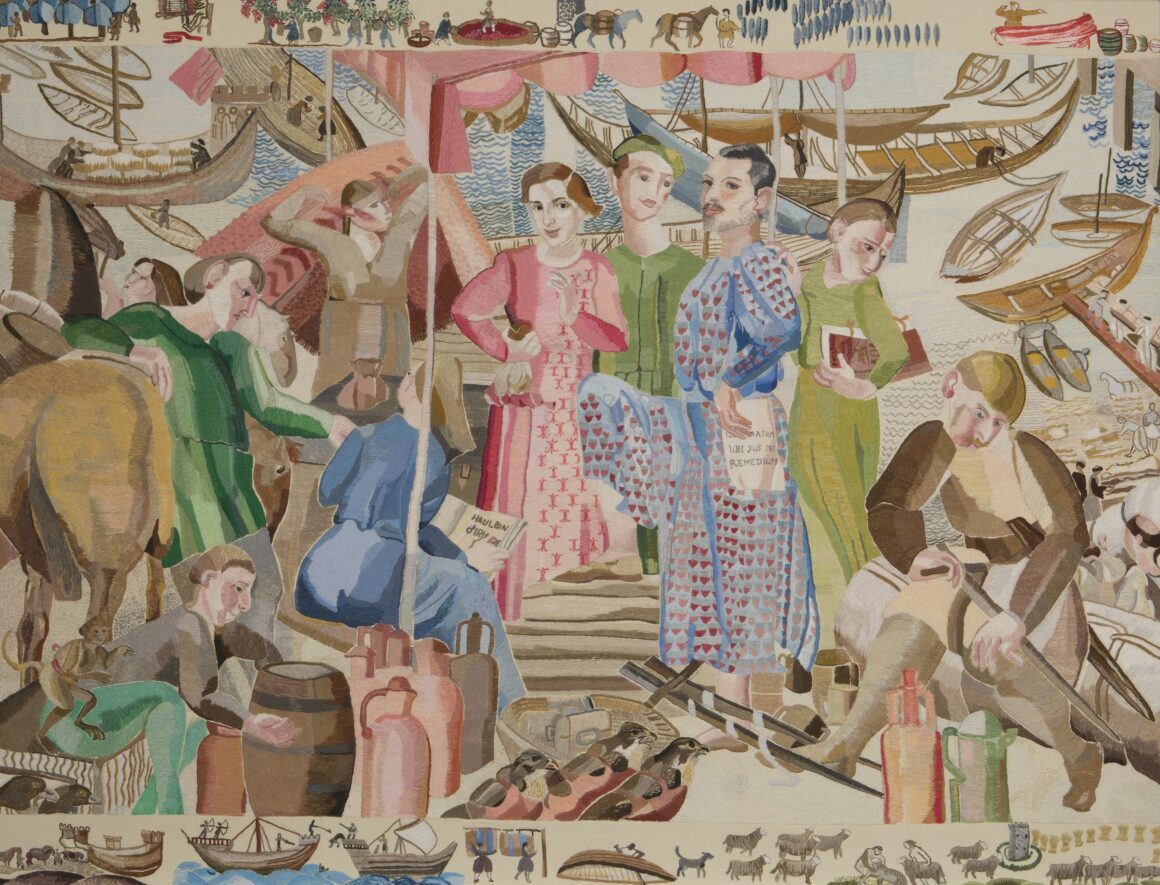
TP: Stitchers have been working constantly since the early 2000s to complete the Ros Tapestry. With 14 of the 15 panels of the tapestry now completed, what are the plans for the finished work?
MLOK: The finalised panels have been housed in Kilkenny Castle for the past four years, since the pandemic, when we had to move them, as we weren’t able to accommodate social distancing. Currently in development is a new Norman Centre for New Ross, which is where the tapestry will be housed upon completion. This has taken longer than first anticipated, however, they’ve come back to New Ross in the meantime.
The idea is that we exhibit them until they move to their permanent home in the new Norman Centre; the anticipated opening is some time in 2027. That project is being promoted by Wexford County Council and Fáilte Ireland, because in 2027 there is a kind of European-wide celebration of William the Conqueror, who led the Norman invasion of England, and whose feats are reflected in the Bayeux Tapestry, to reflect the 1000-year anniversary of his birth. There will be events in Normandy, Ireland, England, and Sicily – everywhere the Normans conquered. So, the new centre will open as part of those celebrations, but until then, the Ros Tapestry will be housed in the exhibition space of the Dunbrody Famine Ship Experience centre in New Ross.
Mary Lou O’Kennedy is the Chairperson of New Ross Needlecraft Ltd.


